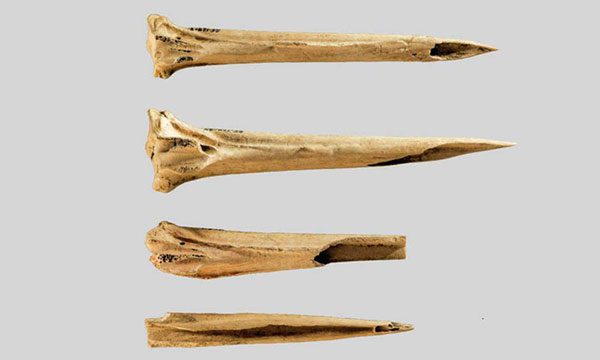Experts have discovered the oldest known pigments and tools made from turkey bones that Indigenous Americans once used for tattooing.

4 turkey ankle bones used as tattooing tools thousands of years ago. Photo: Aaron Deter-Wolf.
A research team led by expert Aaron Deter-Wolf at the Tennessee Department of Environment and Conservation conducted a detailed analysis of sharp turkey bone tools at Fernvale, an archaeological site of Indigenous Americans in Tennessee, as reported by Science Alert on May 27. These tools had previously been simply classified as “tools” after their excavation in 1985. However, new research suggests that they may be the oldest tattooing implements in the world.
“In this study, we not only classified basic morphological forms. We combined archaeological analysis of animal remains, technical assessments, use-wear analysis, and materials science studies to examine the bone tools excavated from an ancient Indigenous American site in central Tennessee,” the team of experts stated.
Analyses revealed that around 3500 – 1600 BCE, residents of Fernvale used sharpened wild turkey bones and red and black pigments for tattooing. The new study was published in the journal Archaeological Science.
The toolkit discovered at Fernvale consists of four sharpened ankle bones, two of which still have intact pointed ends, and two smaller radius bones with visible pigment residues. The experts examined them closely under a microscope to document the wear patterns resulting from manufacturing and use. Additionally, they utilized X-ray fluorescence spectroscopy to help identify the pigments.
The scientists compared the new analyses with results from an earlier study. In this previous research, another team of archaeologists created sharp tattooing tools from white-tailed deer bones and tested them on pig skin to understand the manufacturing and wear patterns they would produce.
Spectral analysis indicated that the red and black residues on the radius bones could originate from iron oxide and carbon—both recognized as traditional tattooing materials in archaeological literature. Furthermore, the wear and pigment residues on the turkey bones matched those found on deer bones.
The researchers also found several fragments of bivalve mollusk shells at the Fernvale site that were stained with pigment. They believe these were likely used as containers for pigments during the tattooing process.





















































